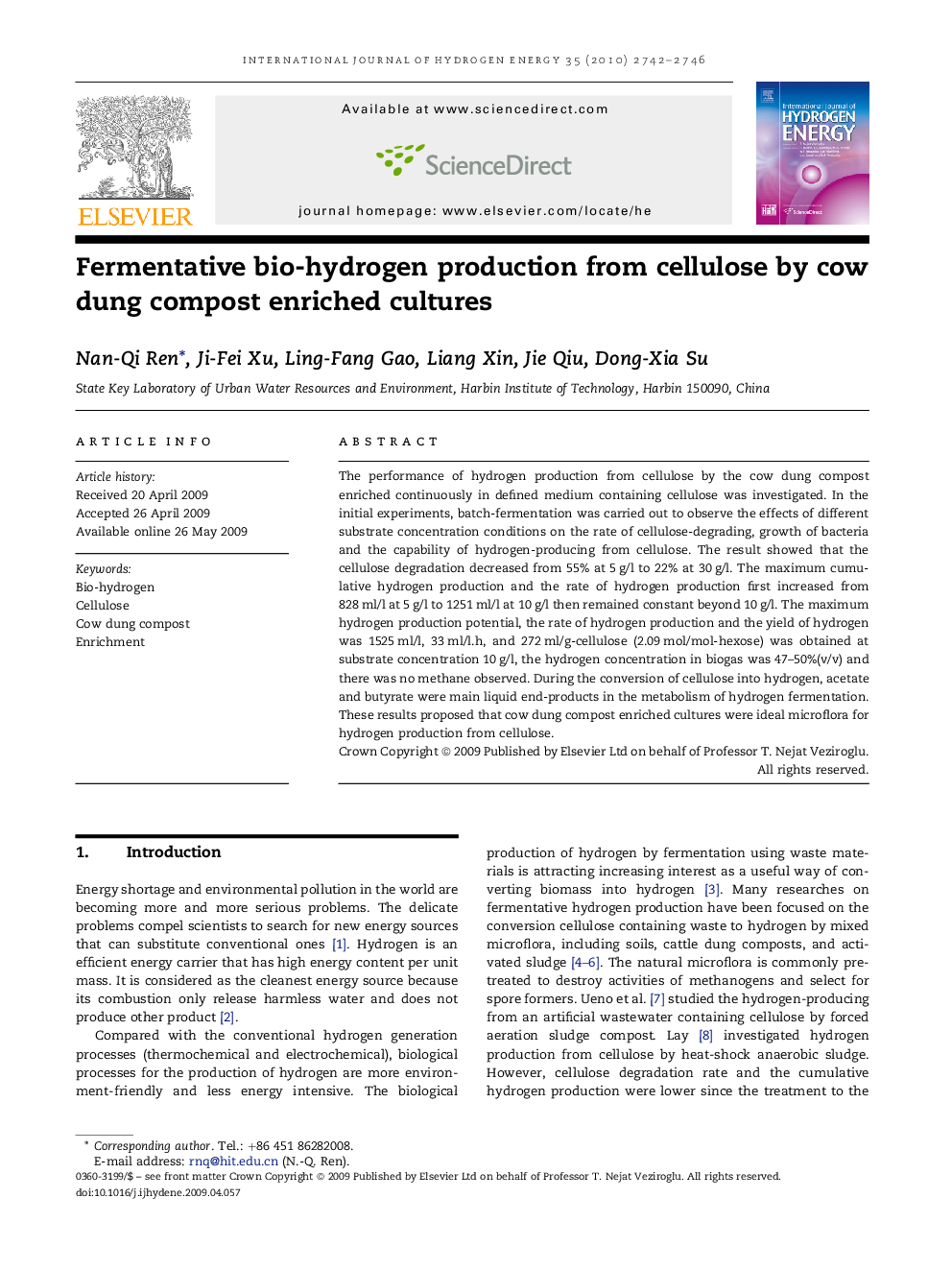| Article ID | Journal | Published Year | Pages | File Type |
|---|---|---|---|---|
| 1273249 | International Journal of Hydrogen Energy | 2010 | 5 Pages |
The performance of hydrogen production from cellulose by the cow dung compost enriched continuously in defined medium containing cellulose was investigated. In the initial experiments, batch-fermentation was carried out to observe the effects of different substrate concentration conditions on the rate of cellulose-degrading, growth of bacteria and the capability of hydrogen-producing from cellulose. The result showed that the cellulose degradation decreased from 55% at 5 g/l to 22% at 30 g/l. The maximum cumulative hydrogen production and the rate of hydrogen production first increased from 828 ml/l at 5 g/l to 1251 ml/l at 10 g/l then remained constant beyond 10 g/l. The maximum hydrogen production potential, the rate of hydrogen production and the yield of hydrogen was 1525 ml/l, 33 ml/l.h, and 272 ml/g-cellulose (2.09 mol/mol-hexose) was obtained at substrate concentration 10 g/l, the hydrogen concentration in biogas was 47–50%(v/v) and there was no methane observed. During the conversion of cellulose into hydrogen, acetate and butyrate were main liquid end-products in the metabolism of hydrogen fermentation. These results proposed that cow dung compost enriched cultures were ideal microflora for hydrogen production from cellulose.
